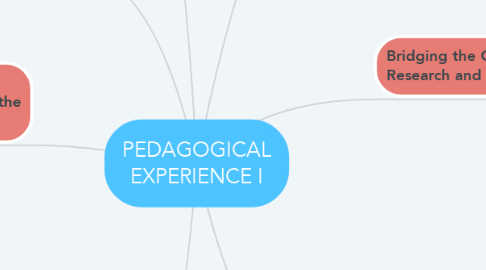
1. Teaching and research
1.1. Is something which may be conducted in a variety of ways and the diversity of approaches needs to be recognized, acknowledged and understood.
2. Researching Teaching Through Context
2.1. the contexts are the content of technology studies, physics student-teacher education, assessment and reflective practice
3. The Genesis of Effective Scientific Explanations for the Classroom
3.1. Solomon (1995) reasons that a good explanation not only takes account of the audience and context, As well as being creative and interesting, effective science explanations must obey the rules of scientific discourse.
3.2. shows that there are different types of explanations depending on the status of the knowledge and the processes being used to frame the explanation.
4. The classroom as an educational context
4.1. Classroom context is the way a teacher chooses to manage the daily concerns of teaching that indirectly shapes the perceptions of students
4.2. Teachers, students, principals, and others have different views on teacher effectiveness, and these views vary according to community, school, and classroom contexts.
4.3. Because of the importance of context in teaching and learning, Anderson and Bums note that teacher behaviors associatedwith achievementin one school or classroom are not necessarily associated with achievement in other settings
5. Understanding of pedagogy
5.1. Illustrates a number of important issues both about pedagogy and how research approaches impact on it.
5.2. Max’s work with anecdotes illustrates the value of exploring new ways of looking into pedagogy through students’ eyes and offers a powerful way for teachers to reconsider their classroom practice and their students’ learning.
5.3. In conclusion, It need to rescue the language of pedagogy and develop its practice in the service of your children, for the sake of your children.
6. Bridging the Gulf Between Research and Practice
6.1. The PAVOT Project
6.1.1. Perspective and Voice of the Teacher
6.1.1.1. The PAVOT project began officially in 1995, when Ian Mitchell and Jeff Northfield (at Monash University) gained a grant from the Australian Research Council to fund teacher research; the call for teachers to participate in this work is contained in THE PAVOT
6.1.1.2. Many teachers and teacher teams have now participated in doing research in their classrooms.
6.1.1.3. All PEEL teachers are researchers - the enormous amount of new knowledge generated by PEEL teachers (simply browse the PEEL CD for evidence) proves this. PEEL teachers are reflecting on their teaching and students learning, trialing new procedures and sharing them with colleagues by writing about them. Teachers who have participated in PAVOT have simply taken the research aspect of PEEL a little further, by more deliberately and systematically collecting data, by analysing the data, and by writing for books and refereed journals.
7. The PEEL project
7.1. Project for the Enhancement of Effective Learning.
7.1.1. Highlights the importance of researching teaching for teachers
7.1.2. Was founded in 1985 by a group of teachers and academics who shared concerns about the prevalence of passive, unreflective, dependent student learning, even in apparently successful lessons.
7.1.3. PEEL has always operated as a network of autonomous groups of teachers who take on a role of interdependent innovators
